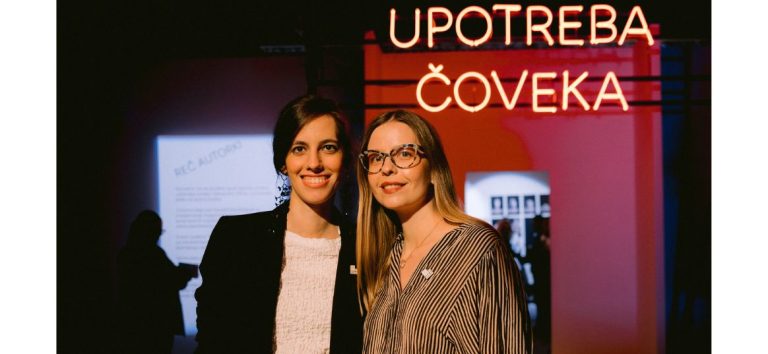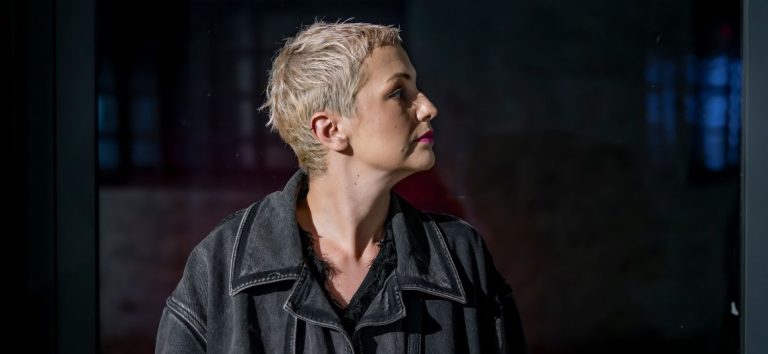The ‘A61 School of Weaving’, which operates as part of Atelje 61, has been successfully training students in the art of weaving for 27 years, passing on the skills of this old craft and preserving the tradition. With the move to a new space in the District, the school continues to attract an increasing number of interested people, including the youngest. Mirjana Dobanovački, a master specialist in artistic weaving, shared with us details about weaving techniques and course structure, and how this skill, despite the fast pace of life, still finds a place in modern society. Learn more about the weaving tradition and how you can join the creative community below.
Can you tell us more about the School of Weaving and how interested parties can apply for the course?
The School of Weaving is one of the many projects of the tapestry-making institution Atelje 61. For 27 years, we have been successfully engaged in weaving training, passing on these skills and knowledge, inheriting, nurturing and striving to preserve our tradition. Over the years, more than a hundred participants have gone through the school, where they have the opportunity to learn and master weaving techniques on horizontal or vertical looms from basic weaving. Over time, we educate them and give them the ability and knowledge to perform more complicated weaves (patterns) in fabrics.
What does the course structure look like and how do you ensure the progress from basic to more advanced techniques?
Training on horizontal looms that can still be found in our grandmothers’ attics is intended for applied fabrics such as garments, fashion details, and a variety of fabrics. When it comes to training on vertical looms (frames), users can master the skills of tapestry or carpet making, which gives a wide range of creative and conceptual expression, freedom in choosing yarns, colours, weaving techniques and conceptual solutions that the trainee will weave. The course is held twice a week for three hours in the afternoon, lasting three months, which is enough to master the skill and to become independent in weaving.

What are the most common challenges beginner weavers face and how do you help them overcome them?
The most common challenges and doubts of the participants are precisely that of choosing the appropriate yarn and interweaving pattern for a certain desired fabric of a given appearance, so that the woven fabric looks exactly as it was intended. Therefore, during the course we also go through education about yarn technology, which yarns we use in certain fabrics, about density and structure. It is extremely important to master the working principle and functioning of the loom on which weaving is done. Furthermore, the theoretical part is indispensable, which will enable users to continue independent work at home.
To what extent is weaving represented in our area today and is there interest in the preservation and development of this skill in modern society?
I am happy that in today’s modern society, fellow citizens have an ear and need to turn to some traditional and manual activities such as weaving. Due to the great interest not only of adults, for whom this course is primarily intended, we have opened the doors to our youngest fellow citizens of preschool and school age.

What are the plans of the School of Weaving and are you planning any new projects for the students?
Projects Tkam i Maštam, Generacijski Mostovi, workshops in Svilara and Egység cultural stations, as well as in preschool institutions have been successfully held continuously for several years. In this manner, with my knowledge and instructions, with their teachers and educators, the little ones perform their first woven works extremely imaginatively and creatively. We are also planning cooperation with high textile schools in Novi Sad.
In your opinion, how significant is it that Atelje 61 got a new space in the District, today’s centre of artistic creativity?
It is a great advantage that the School of Weaving from the Petrovaradin Fortress moved and got premises in the District, due to its location and cultural events, the number of participants and those interested in this old craft has increased significantly. Due to the adequate exhibition space provided by the District, we are able to prepare and make exhibitions of the final works of our students, about which you will be informed. On this occasion, I invite all lovers interested in learning to weave to visit us. If you wish to learn and master the skills of weaving through traditional forms and learn to create modern contemporary fabrics, be sure to visit our Facebook page.
Author: Marina Marić
Photo: Private archives








